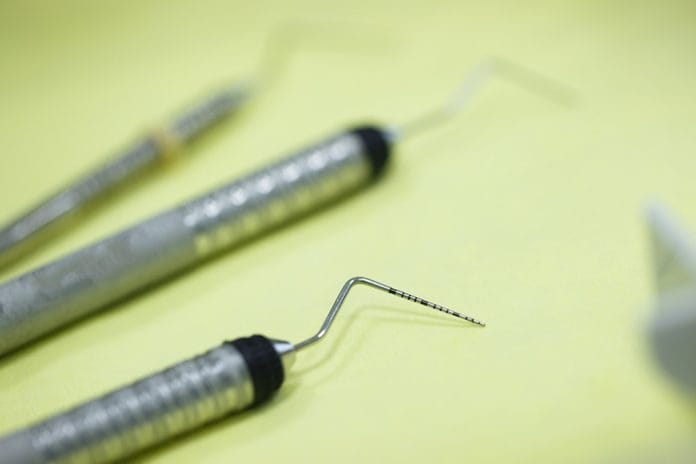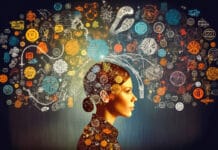Dental hygienists learn early on that the periodontal probe is essentially our greatest tool in the assessment of periodontal health. Periodontal probing creates a record of health or disease over time that dental hygienists can reference to, evaluate healing, or determine the possible need to implement a more aggressive treatment plan. Including dental radiographs, a complete periodontal evaluation allows us to compile important measurements and observations that build a complete picture of a patient’s oral health.
The Latin word “probo” means “to test,” which is fitting for an assessment instrument like the periodontal probe. The most well-known probe, which became the prototype for probes to follow, was fabricated by a periodontist named C.H.M. Williams in 1936.1
In dental hygiene, the probe allows us to measure pocket depths, recession, and the width of attached gingiva, locate and measure furcations, assess intraoral lesions, and evaluate bleeding tendencies.2,3 The data collected from each of these categories presents a perfect opportunity to educate the patient about their oral health.
Educating Patients on Why We Probe
Begin education about periodontal probing with the basics. People learn in diverse ways, but there are many aids to help any patient understand the structures of the periodontium and the progression of gingivitis to periodontitis. A simple hand mirror and demonstration of probing the patient’s periodontal pockets/sulcus is a wonderful way to explain the exam while showing where and how measurements are obtained.
Relatable analogies like comparing homes and their foundation, or wooden posts in concrete destroyed by termites, to periodontal disease and bacteria can also create a good visual interpretation. In addition, there are many 3D models, online media, and printable resources concerning oral health and periodontal disease.
One challenge of periodontal probing is patient discomfort due to sensitivity. While patient comfort is a priority, it is important the patient understand where their discomfort stems from, whether it is root exposure with recession or inflamed gingival tissue.
Plastic probes are generally more comfortable for patients with generalized recession, and topical anesthetics can help patients who present with inflammation. Second-generation constant force probes or pressure-sensitive probes introduced in 1971 have been shown to increase patient comfort. Third-generation computer-assisted direct data capture systems like the Florida probe are set at 15 grams probing force and help to decrease operator errors.4
Using unnecessary force can increase patient discomfort, sulcular tissue damage, and incorrect measurements. The recommended probing force is between 10-20 grams and may be practiced with a scientific scale.3
Errors in Periodontal Charting
Errors in periodontal charting commonly stem from calculus interference, restoration overhangs, or incorrect angulation or pressure. Clinical attachment loss miscalculation or incorrectly recording data in the chart can also occur.4
One major obstacle for many is shorter appointment times, which may lead to rushed, incorrect, or completely skipped assessments. Both periodontal probing and radiographs require additional time, so many hygienists have to alternate these assessments at each re-care to be more efficient.
CDT code D0180 (comprehensive periodontal evaluation) may be used in place of periodic exam code D0120 at a higher fee due to the extra time necessary to complete a full mouth probing.
Periodontal Charting Efficiently
There are a few options to make charting more efficient and easier to complete without assistance. A wireless USB number keypad is one of the most cost-effective options. Using a universal USB connector, it is ergonomic and easy to barrier for use anywhere convenient while probing.
The Dental R.A.T. (remote access terminal) is a foot-operated mouse that allows hands-free entry while periodontal charting with a wireless USB connection.
To be completely free of input, voice-activated periodontal charting programs, such as Dentrix VoicePro, are integrated or work with computer software and a headset to input spoken measurements.
Both the Dental R.A.T. and most software similar to VoicePro include voiced or repeated measurements the patient can hear and might be useful in education.
Periodontal probing has gotten a bad rap for the tedious and time-consuming nature of the assessment but provides invaluable information hygienists can use to motivate better home care and overall oral health. The periodontal probe allows evaluation of disease severity, progress, and the result of therapeutic efforts. It is an essential instrument in periodontal disease prevention and maintenance.
Need CE? Check Out the Self-Study CE Courses from Today’s RDH!
Listen to the Today’s RDH Dental Hygiene Podcast Below:
References
- Hefti, A.F. Periodontal Probing. Crit Rev Oral Biol Med. 1997; 8(3): 336-356. https://pubmed.ncbi.nlm.nih.gov/9260047/
- Darby, M.L., Walsh, M.M., & Bowen, D.M. (2009). Dental Hygiene: Theory and Practice (3rd ed.). Saunders.
- Nield-Gehrig, J. S. (2000). Fundamentals of Periodontal Instrumentation & Advanced Root Instrumentation (6th ed.). Lippincott Williams & Wilkins.
- Gupta, N., Rath, S.K., Lohra, P. Comparative Evaluation of Accuracy of Periodontal Probing Depth and Attachment Levels Using a Florida Probe Versus Traditional Probes. Medical Journal, Armed Forces India. 2015; 71(4): 352-358.












